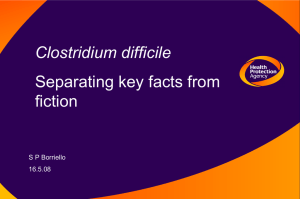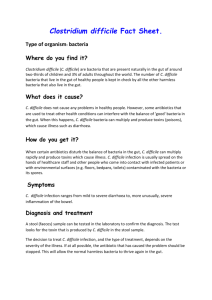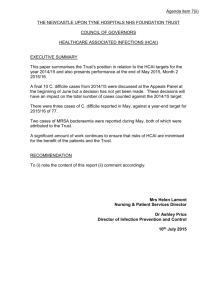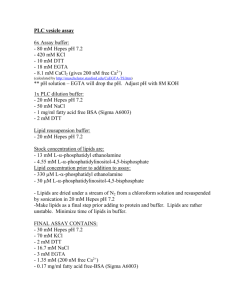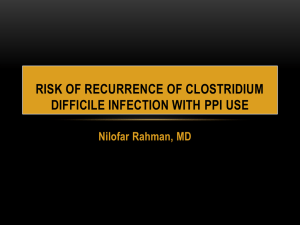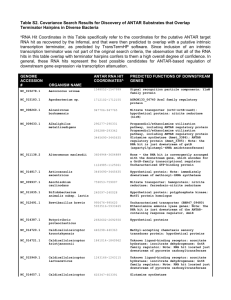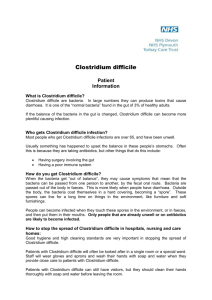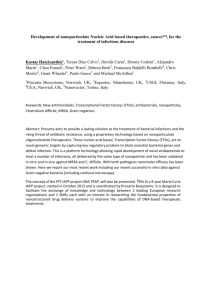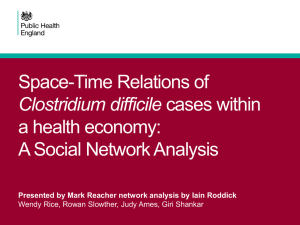Abstract - Emory University
advertisement
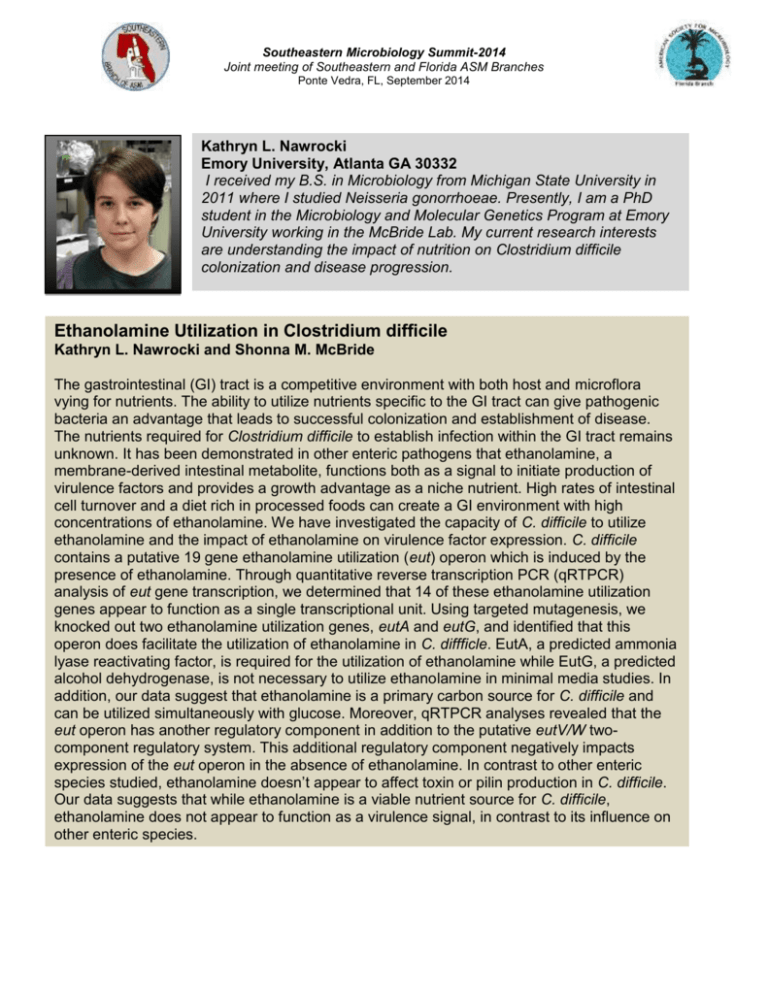
Southeastern Microbiology Summit-2014 Joint meeting of Southeastern and Florida ASM Branches Ponte Vedra, FL, September 2014 Kathryn L. Nawrocki Emory University, Atlanta GA 30332 I received my B.S. in Microbiology from Michigan State University in 2011 where I studied Neisseria gonorrhoeae. Presently, I am a PhD student in the Microbiology and Molecular Genetics Program at Emory University working in the McBride Lab. My current research interests are understanding the impact of nutrition on Clostridium difficile colonization and disease progression. Ethanolamine Utilization in Clostridium difficile Kathryn L. Nawrocki and Shonna M. McBride The gastrointestinal (GI) tract is a competitive environment with both host and microflora vying for nutrients. The ability to utilize nutrients specific to the GI tract can give pathogenic bacteria an advantage that leads to successful colonization and establishment of disease. The nutrients required for Clostridium difficile to establish infection within the GI tract remains unknown. It has been demonstrated in other enteric pathogens that ethanolamine, a membrane-derived intestinal metabolite, functions both as a signal to initiate production of virulence factors and provides a growth advantage as a niche nutrient. High rates of intestinal cell turnover and a diet rich in processed foods can create a GI environment with high concentrations of ethanolamine. We have investigated the capacity of C. difficile to utilize ethanolamine and the impact of ethanolamine on virulence factor expression. C. difficile contains a putative 19 gene ethanolamine utilization (eut) operon which is induced by the presence of ethanolamine. Through quantitative reverse transcription PCR (qRTPCR) analysis of eut gene transcription, we determined that 14 of these ethanolamine utilization genes appear to function as a single transcriptional unit. Using targeted mutagenesis, we knocked out two ethanolamine utilization genes, eutA and eutG, and identified that this operon does facilitate the utilization of ethanolamine in C. diffficle. EutA, a predicted ammonia lyase reactivating factor, is required for the utilization of ethanolamine while EutG, a predicted alcohol dehydrogenase, is not necessary to utilize ethanolamine in minimal media studies. In addition, our data suggest that ethanolamine is a primary carbon source for C. difficile and can be utilized simultaneously with glucose. Moreover, qRTPCR analyses revealed that the eut operon has another regulatory component in addition to the putative eutV/W twocomponent regulatory system. This additional regulatory component negatively impacts expression of the eut operon in the absence of ethanolamine. In contrast to other enteric species studied, ethanolamine doesn’t appear to affect toxin or pilin production in C. difficile. Our data suggests that while ethanolamine is a viable nutrient source for C. difficile, ethanolamine does not appear to function as a virulence signal, in contrast to its influence on other enteric species.

